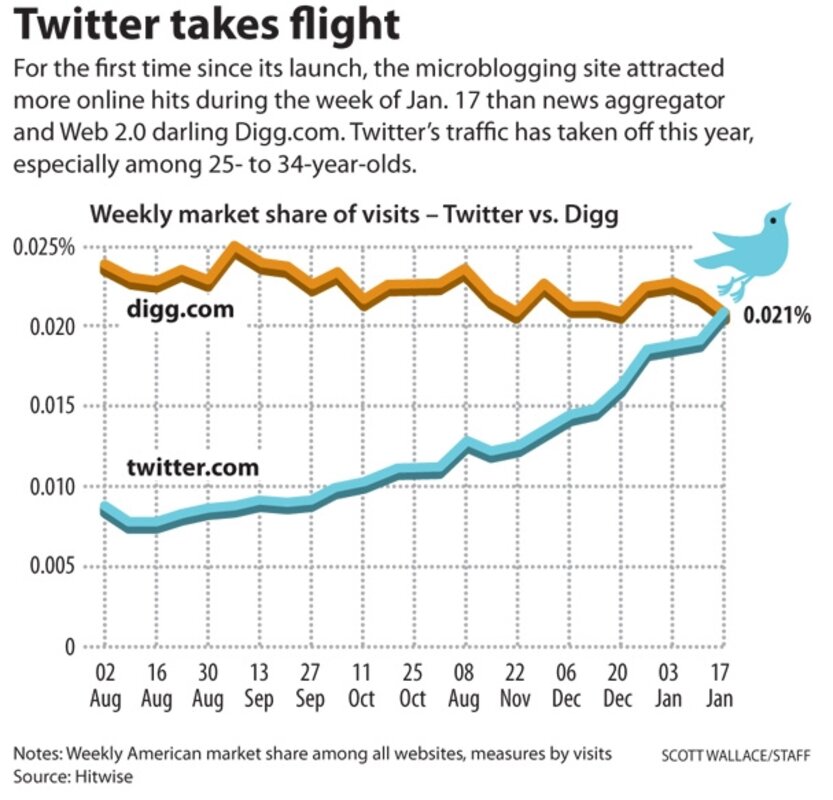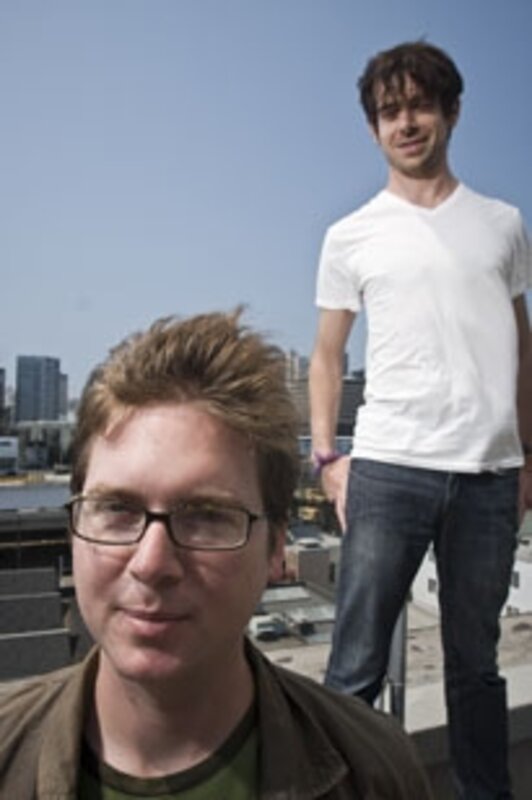Twitter’s secret: the law of unintended consequences
Loading...
When Stephen Fry was trapped in a broken elevator in London earlier this month, he pulled out his mobile phone and sent a short text to his more than 160,000 “followers” on Twitter.com: “OK. This is now mad. I am stuck in a lift on the 26th floor of Centre Point. Hell’s teeth. We could be here for hours.”
He even sent a picture of himself to illustrate his predicament. Nearly immediately, many of his “followers” replied to the British actor, author, and comedian with return “tweets” – as the brief, 140-character or less texts are called.
Charmed by the responses, Mr. Fry “tweeted” back, “Your brilliant comments are keeping us all (hysterically) cheerful.”
In a Twitter-fied world, no one ever need feel alone or unconnected.
Fry is now the second-most popular individual on Twitter, trailing only President Obama, who has about 250,000 followers. (The Obama “tweets” have gone silent, however, with only one entry since last November. Conversely, Fry has “tweeted” some 1,400 times in the last 200-plus days.)
Twitter has quickly become the preeminent way to go about “micro-blogging,” sending short real-time comments to the world (if it’s looking) and especially to anyone who signs up as a follower.
When the service was introduced in 2006, it was ridiculed as the latest narcissistic way to waste time online.
Last year, minds began to change. Twitterers tapped out tweets during the earthquake in China while the ground was still shaking and live during the terrorist attacks in Mumbai, India. One of the first pictures of the airliner downed in the Hudson River last month, picked up by major newspapers and magazines, was “tweeted” by a 23-year-old tourist with an iPhone who happened to be aboard a ferry sent to the rescue. Suddenly, Twitter has become a venue for “citizen journalism,” a way to learn what’s happening sometimes even before news organizations themselves could find out.
“News no longer breaks, it tweets,” blogged Paul Saffo, a Silicon Valley-based technology forecaster, last November during the Mumbai attacks. “If newspapers are the first draft of history, then blogs are the scratch pad. And in front of blogs are tweets,” he added in a phone interview last week.
Twitter is a classic example of the “law of unintended consequences,” says Matthew Fraser, who tracks the world of online social networking. At first, he says, people shared the “micro-banalities of life” such as “I’m at McDonald’s having a Big Mac.”
But Twitter now has “morphed” into something with real value and utility, says Mr. Fraser, coauthor of “Throwing Sheep in the Boardroom: How Online Social Networking Will Transform Your Life, Work, and World.”
More and more Twitterers share useful information, in essence giving the “headline” and sometimes sharing a web link that points to more information, says Fraser, the former editor in chief of Canada’s national daily newspaper, the National Post.
Growing chorus of tweeters
Twitter’s mushrooming growth has observers wondering if it could possibly be the next online phenomenon. The service is starting to grow beyond geeks and early adopters and beginning “to hit the mainstream,” says Louis Gray, a technology blogger in Silicon Valley.
The service has attracted 4 million to 5 million users, 70 percent of whom joined in 2008, calculates a recent report from HubSpot.com, which analyzes business activity on the Web. An estimated 5,000 to 10,000 new Twitter accounts are opened each day, and traffic to the site grew by more than 600 percent in the most recent 12-month period HubSpot measured.
Last month, Twitter passed Digg.com, a successful, established news aggregation website, in market share of visitors, says Heather Dougherty, research director for Hitwise, an Internet measurement and analysis firm. And Twitter is “probably much bigger” than the Hitwise statistics show, she says, because much of Twitter’s traffic flows through mobile devices or other third-party software that isn’t being captured in Hitwise’s data.
But where’s the business plan?
Facebook, the popular social networking site, tried and failed to buy Twitter for a deal some valued at a half-billion dollars. Like Facebook, Twitter has yet to make a penny for its founders. It’s living on money from investors. According to the website Techcrunch, a recent infusion of more than $20 million in venture funds would mean that Twitter has, in theory, a value of $250 million.
But that’s only if a way to make it pay for itself can be found. “We plan to build Twitter, Inc into a successful, revenue-generating company,” the company website says. “Twitter has many appealing opportunities for generating revenue but we are holding off on implementation for now because we don’t want to distract ourselves from the more important work at hand, which is to create a compelling service and great user experience for millions of people around the world.”
Even if Twitter fails, it’s already proven that micro-blogging is here to stay, Mr. Saffo says. Second Life and World of Warcraft weren’t the first to jump into the online role-playing arena, he notes, but they were the ones who figured out how to make it pay. “Someone will figure out the model” for profitable micro-
blogging, he says.
Charging a fee to use Twitter isn’t likely. “Anytime you have a service that is free, customers are going to expect it to stay free,” Mr. Gray says. Advertising would seem to be a logical next step (Twitter has no ads now), but other social networks have found that users find them intrusive. “They see it as a social space,” not a commercial venue, Fraser says.
But businesses might be willing – and able – to pay for a Twitter presence. In an e-mail, Twitter co-founder Biz Stone says the company plans to talk about revenue sources later this year and that paying for “commercial usage” is one possibility.
Another is that a big player, such as Google, might buy Twitter and add it as a feature among the many that it offers.
The new haiku
Meanwhile, the ways people use Twitter continue to proliferate. For consumers, it’s become “a big complaint box” where Twitters can voice their dissatisfaction, Ms. Dougherty says. That, in turn, “is making companies pay attention to Twitter” to see what is being said about them – or even start their own Twitter accounts, she says.
Celebrities beyond Fry are beginning to use Twitter to talk to their fans too. Britney Spears, Lance Armstrong, Stephen Colbert, Shaquille O’Neal, and Tina Fey are among those sending tweets, each attracting thousands of followers.
Some might charge that Twitter is still largely a vast wasteland of self-indulgence and irrelevancy. But Twitter’s best days may still be ahead, Saffo says. “It’s already become a new news form, and I think it’s in the process of becoming a new literary form,” he says. He notes how Lincoln’s Gettysburg address, so brief yet so profound, was influenced by his use of the telegraph, which disciplined Lincoln to get to his point quickly.
Twitter, Saffo says, may become “Haiku in the age of attention deficit disorder.” The 140-character limit “really forces the writers to compress their thoughts into a very short space,” he says.
Twitter is a “disruptive” technology because it is in “real time,” Gray says. With blogging, “there’s still a lag between when they post and [when] you get it.... If you want to find out something that is happening immediately, the place to go is Twitter and not Google anymore. And that’s revolutionary. And that’s why Google, in my opinion, should be watching this closely.”





